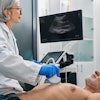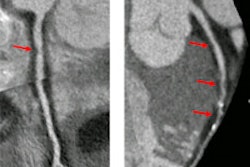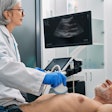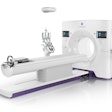Dear Cardiac Imaging Insider,
Over the past several years, researchers in Budapest have been taking a good long look at the subject of twins, both identical and fraternal, in a quest to determine whether nature or nurture wields a greater impact on the development of heart disease.
In some cases, the answer turns out to be mixed, as illustrated by a new study presented at ECR 2015. There, researchers reached the surprising conclusion that it depends on the type of plaque you're looking at. Calcified plaque is a strongly heritable trait, the study team reported, while noncalcalcified plaque appears to be more a product of environment and lifestyle choices.
The results are important as they suggest that patients aren't powerless when it comes to mitigating their risk of cardiac events, even if Aunt Edna had hardening of the arteries. Learn more about the Burden of Atherosclerotic Plaques in Twins (BUDAPEST) study by clicking here.
According to a large new study from the U.K., coronary CT angiography (CCTA) is a valuable tool that sharpens diagnosis and allows for better classification of findings and a more nimble treatment approach. The study looked at more than 4,000 patients presenting with chest pain to compare the impact of CCTA on diagnosis and treatment versus the standard of care. CT was found to clarify the diagnosis of a high percentage of patients, enabling treatments to be modified as needed. Get the rest of the story here.
Do cardiology meetings save patients' lives? In another story, our intrepid contributor Dr. Peter Rinck, PhD, looked at a study of patient outcomes that occurred during cardiology meetings, when the best and the brightest physicians would presumably be hobnobbing with their peers rather than saving lives. Funny thing though, mortality actually dropped during the congresses as fewer procedures were performed. Is there a message for radiology in the numbers? Look here for the rest of the story.
There is a more accurate way to diagnose myocardial edema, and it starts with MRI-based T2 relaxation times, according to a report from the University of Cologne in Germany. The researchers looked at a wide range of MRI sequences with the aim of finding one with less variability. While the subject needs more study, one MRI sequence clearly outperformed the others, the researchers wrote. Find out which one by clicking here.
Last but not least, Saudi Arabians are at high risk of a heart attack -- as many as 1 in 4, according to a report from the Saudi Heart Association annual conference that you'll find here. The results are only preliminary, but one thing's for sure: You can reduce your risk of not knowing the latest cardiac imaging news by visiting your Cardiac Imaging Community regularly.
For the rest of the news about cardiac imaging, we invite you to scroll through all of the links below.



















